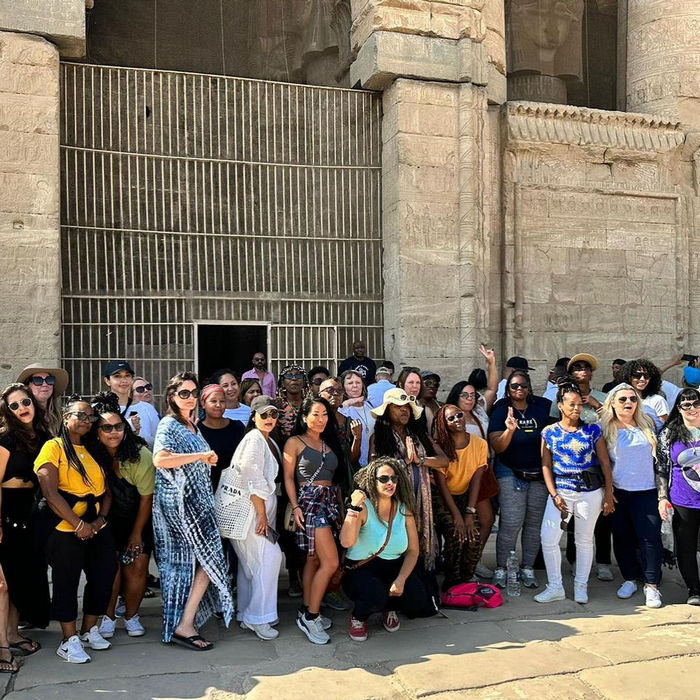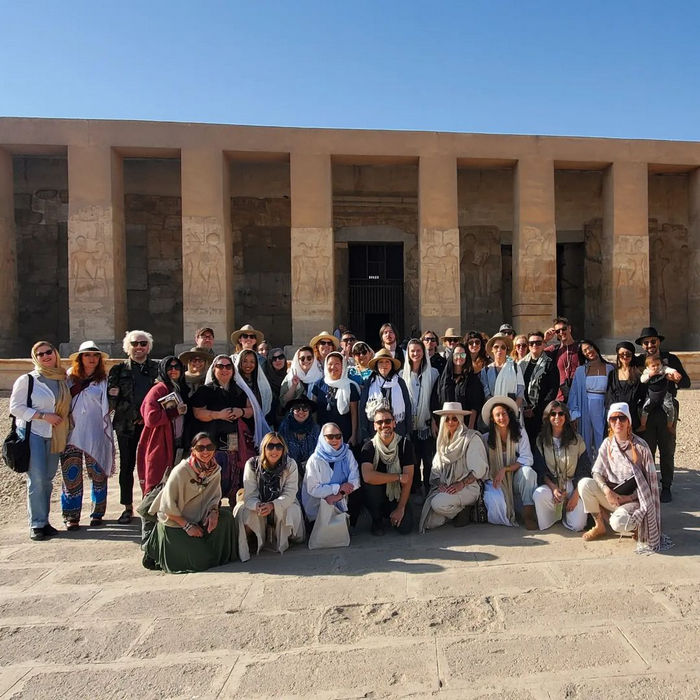Discovering Ancient Secrets: A Special Trip to Abydos and Dendera from Hurghada
Discovering Ancient Secrets: A Special Trip to Abydos and Dendera from Hurghada
Blog Article
Embarking on a journey to the ancient temples of Abydos and Dendera from Hurghada offers a captivating glimpse into the rich tapestry of Egyptian history and mythology. These iconic sites, steeped in significance, were once central to the spiritual and cultural life of ancient Egyptians, serving as sacred grounds for worship and burial. As travelers step into these magnificent structures, they not only walk through the remnants of a bygone era but also unlock a treasure trove of secrets that have fascinated historians and adventurers alike for centuries. This article aims to guide you through the essential aspects of planning your trip, exploring the awe-inspiring temples, and uncovering the profound cultural insights that enhance your experience in these ancient wonderlands. Join us as we delve into the mysteries of Abydos and Dendera, enriching your understanding of one of the world’s oldest civilizations.

Exploring Abydos: The Temples and Their Symbolism
The Temple of Seti I: Architectural Marvels
Welcome to the Temple of Seti I, an architectural marvel that even stone masons today would weep tears of joy over! This temple is a visual feast, showcasing detailed reliefs and exquisite pillars that tell tales of gods, kings, and the afterlife. Set against the starkness of the desert, this temple stands as a testament to the ingenuity of ancient Egyptian builders. As you wander through its halls, you may find yourself asking if this is what heaven looks like.
Hieroglyphics and Their Meanings
Ah, the mysterious world of hieroglyphics—an ancient alphabet where pictures speak louder than words. Each hieroglyph tells a story, from the mighty achievements of pharaohs to the spiritual significance of gods. At Abydos, you’ll find some of the most intricate carvings, complete with cryptic messages that would make even a seasoned detective raise an eyebrow. Keep your camera ready and your phone on ‘silent’ because you might just want to snap a shot and put on your best “I totally understand this” face for your social media followers.
Key Artifacts and Discoveries
Abydos is a treasure chest filled with artifacts that could make Indiana Jones green with envy. From ancient pottery to burial goods, each piece tells a story of life, death, and everything in between. Don’t forget to visit the Osiris Temple, where stunning relics illustrate the mythos surrounding this enigmatic god. Just remember: no touching! These artifacts are on a strict no-fingerprints policy.

Unveiling Dendera: The Temple of Hathor and Its Mysteries
Architectural Features of the Temple
As you step into the Temple of Hathor, be prepared to have your breath taken away. The intricate columns and massive stone walls offer a glimpse into ancient artistry that’s nothing short of mind-blowing. Each structure is like a gigantic puzzle piece, meticulously crafted to honor Hathor and her divine virtues. You'll find yourself wandering through halls that feel more like a divine gallery than a mere temple. Don’t forget to look up, because the ceilings are a whole different story—one that just might leave you in awe.
The Zodiac Ceiling: A Celestial Map
And speaking of ceilings, let’s talk about the famous Zodiac Ceiling of Dendera—because what’s better than exploring the afterlife while stargazing? This stunning astronomical depiction is a celestial map, revealing the positions of stars and constellations as understood by the ancients. It’s like the universe’s version of Google Maps, showing you the way to the stars and back. Grab a guidebook or a smartphone app to decode the mysteries above you—because who doesn’t want to impress their friends with celestial trivia?
Festivals and Rituals Conducted at Dendera
With its vibrant history, Dendera was not just a static site; it pulsed with life through vivid festivals and rituals. Imagine processions, music, and dances that lifted spirits and filled hearts with joy, all in honor of Hathor. From wine offerings to lively celebrations, the Temple of Hathor was the social hub of ancient Egypt. Though you may not catch a festival during your visit, you can still feel the echoes of laughter and music that once filled these halls, beckoning you to imagine the celebrations of ancient times.
With this guide in hand, you’re all set to dive headfirst into the wonders of Abydos and Dendera. So, grab your sunscreen, your sense of adventure, and prepare for a journey! #Discovering Ancient Secrets: A Special Trip to Abydos and Dendera from Hurghada
Cultural Insights: Understanding Ancient Egyptian Beliefs
The Role of Gods and Goddesses
Step into ancient Egypt, and you'll find a pantheon of gods and goddesses that could put any Marvel movie to shame. From the wise Osiris, God of the afterlife, to the fierce Sekhmet, goddess of war, these deities were central to everyday life and the afterlife. Temples were built to honor them, and elaborate rituals were performed to gain favor or seek protection. So, when you’re wandering through the grand halls of Abydos and Dendera, don’t be surprised if you feel like you’ve stepped into a divine soap opera where gods interact just like characters in a drama—complete with twists and turns that would leave anyone on the edge of their seats.
Funerary Practices in Ancient Egypt
Now, if a soap opera sounds exciting, wait until you hear about funerary practices—it's practically a blockbuster! Ancient Egyptians believed in an afterlife where one's heart would be weighed against a feather. Spoiler alert: if your heart had more baggage than a tourist in a duty-free shop, it was game over! Tombs weren’t just resting places; they were elaborate preparations for eternity, complete with food, treasures, and even servants—because who wouldn’t want a little help in the afterlife? As you explore Abydos, the sacred burial site of Osiris, you’ll get a front-row seat to this fascinating aspect of their culture.
Funerary Practices in Ancient Egypt
Now, if a soap opera sounds exciting, wait until you hear about funerary practices—it's practically a blockbuster! Ancient Egyptians believed in an afterlife where one's heart would be weighed against a feather. Spoiler alert: if your heart had more baggage than a tourist in a duty-free shop, it was game over! Tombs weren’t just resting places; they were elaborate preparations for eternity, complete with food, treasures, and even servants—because who wouldn’t want a little help in the afterlife? As you explore Abydos, the sacred burial site of Osiris, you’ll get a front-row seat to this fascinating aspect of their culture.
Art and Symbolism in Temples
Entering the temples at Abydos and Dendera is akin to stepping into an ancient art gallery where the artists took their job a tad too seriously. Intricate carvings and vibrant hieroglyphics tell stories that date back thousands of years, depicting everything from daily life to cosmic battles. Each symbol has a deeper meaning, often tied to their beliefs and myths. For example, the ankh represents life, while the scarab symbolizes rebirth. So, take a moment to decipher the artistry around you—it’s like a history puzzle waiting for you to crack!
Final Thoughts and Recommendations
As you wrap up your explorations, take a moment to reflect. The temples of Abydos and Dendera beckon us not just as historical monuments but as reminders of who we are and where we come from. So, pack your bags, bring your sense of adventure, and embark on a journey that promises to enlighten, inspire, and leave you longing for more. Happy travels! As you conclude your journey through the ancient wonders of Abydos and Dendera, it's clear that these sites offer more than just breathtaking architecture and historical artifacts; they provide a deep connection to the beliefs and practices of a civilization that has shaped human history. The insights gained from exploring these temples enrich our appreciation for ancient Egyptian culture and remind us of the enduring legacy of the past. Whether you are a history enthusiast or a casual traveler, a visit to these sacred places promises to be a memorable experience that lingers long after you return home. We hope this guide inspires you to embark on your own adventure to discover the secrets of Abydos and Dendera, and to carry the stories of these ancient sites with you into the future.
Frequently Asked Questions (FAQ)
1. How far are Abydos and Dendera from Hurghada?
Abydos is approximately 335 kilometers (215 miles) from Hurghada, while Dendera is around 240 kilometers (150 miles) away. The journey typically takes about 4 hours by car, depending on traffic and road conditions.
2. Are there guided tours available for visiting Abydos and Dendera?
Yes, there are numerous guided tours available that offer convenient transportation and expert insights into the history and significance of both sites. These tours often include additional services such as meals and entrance fees, making them a hassle-free option for travelers.
3. What should I wear when visiting the temples?
Visitors are encouraged to dress respectfully when visiting these ancient sites. Light, breathable clothing is ideal for the warm climate, while modest attire that covers shoulders and knees is recommended to honor the cultural significance of the temples.
4. Are photography and videography allowed at Abydos and Dendera?
Photography is generally permitted at both sites; however, it is advisable to check for any specific restrictions or guidelines upon arrival. Some areas may have limitations, particularly within certain temple chambers or during special ceremonies.
